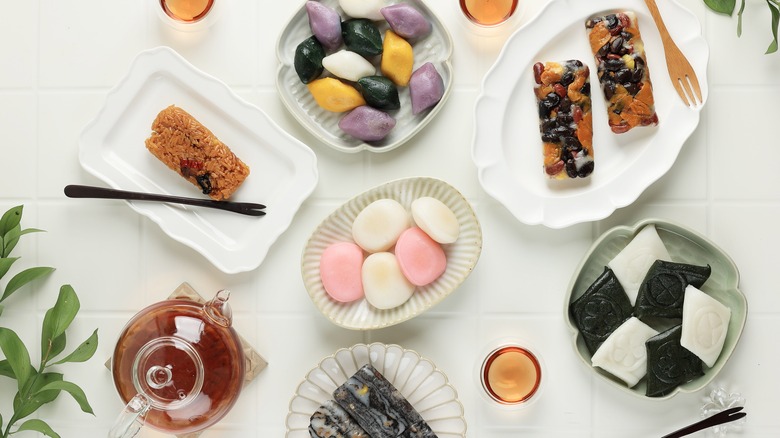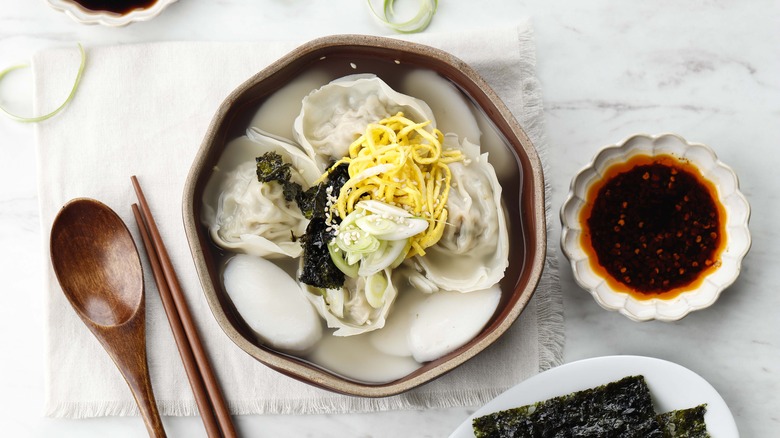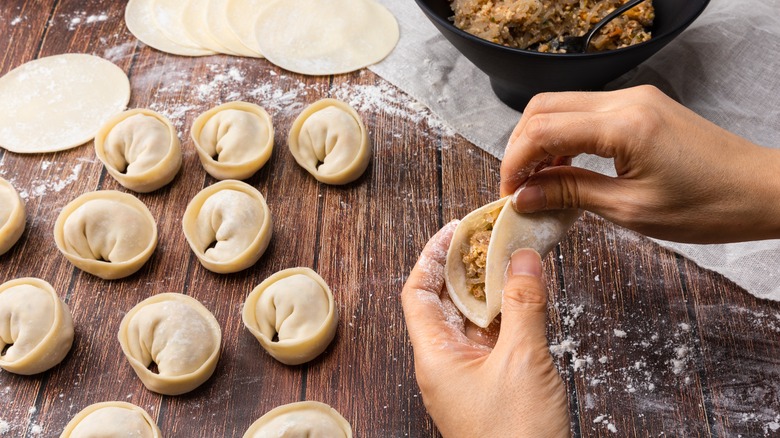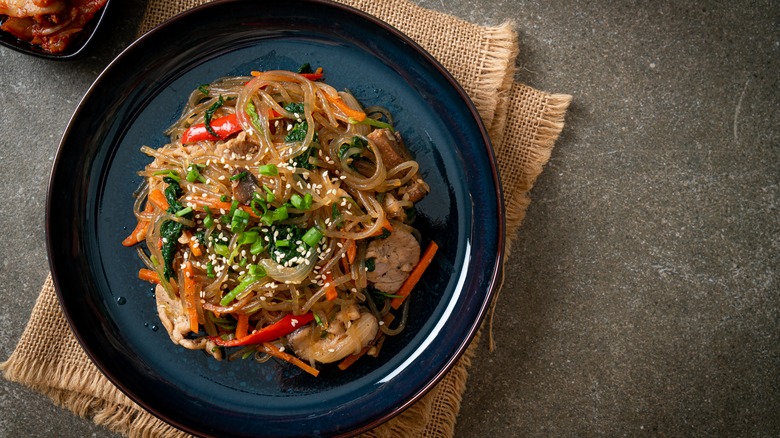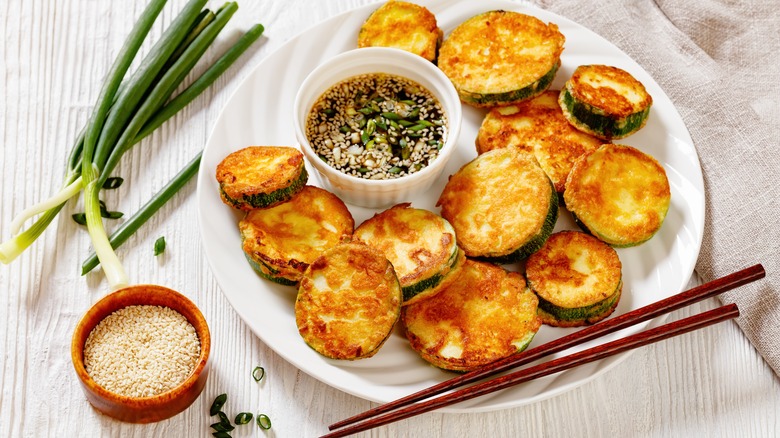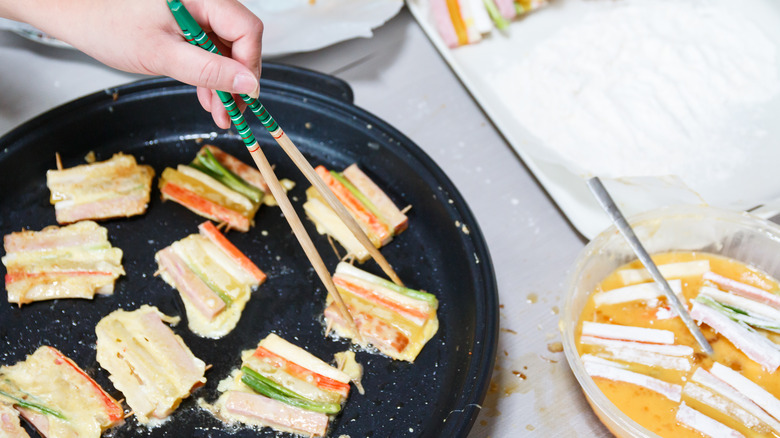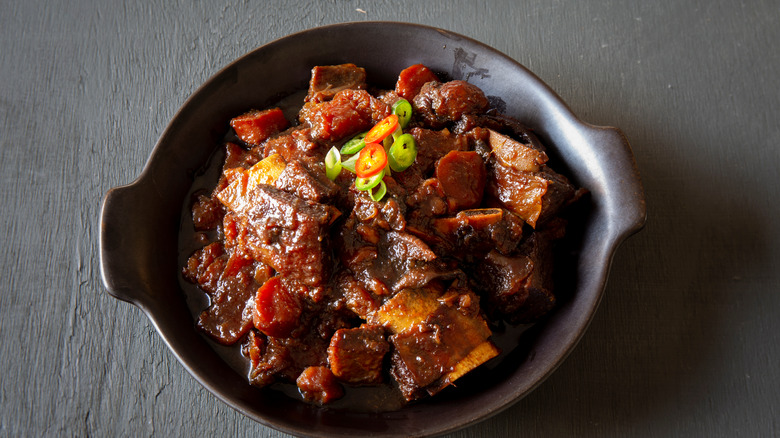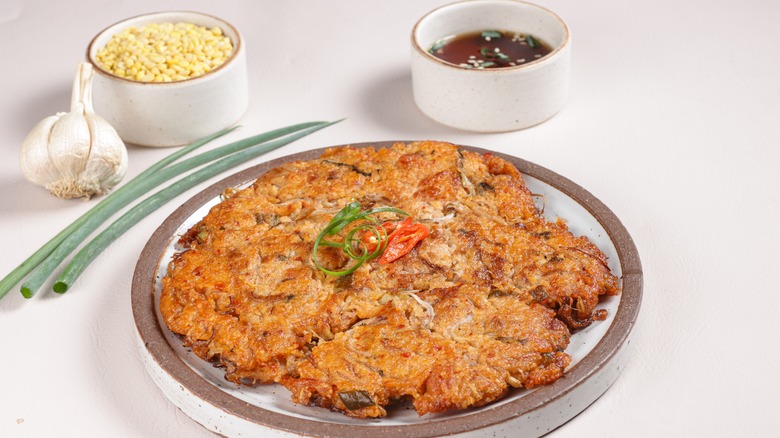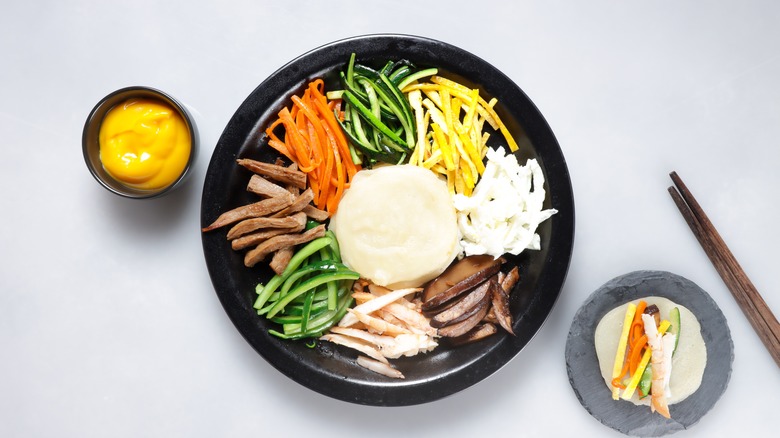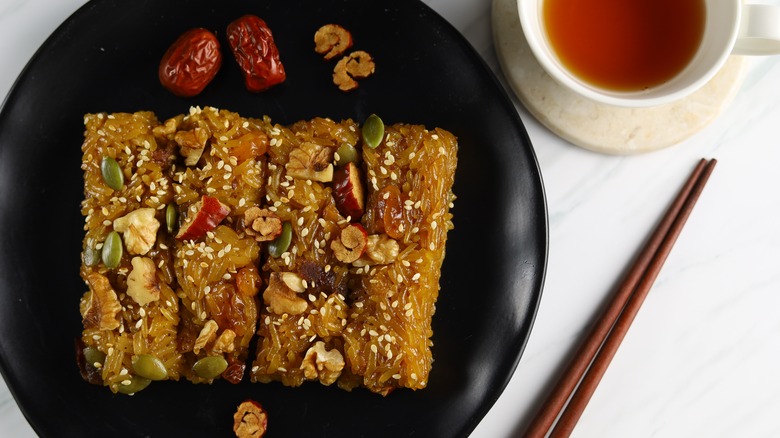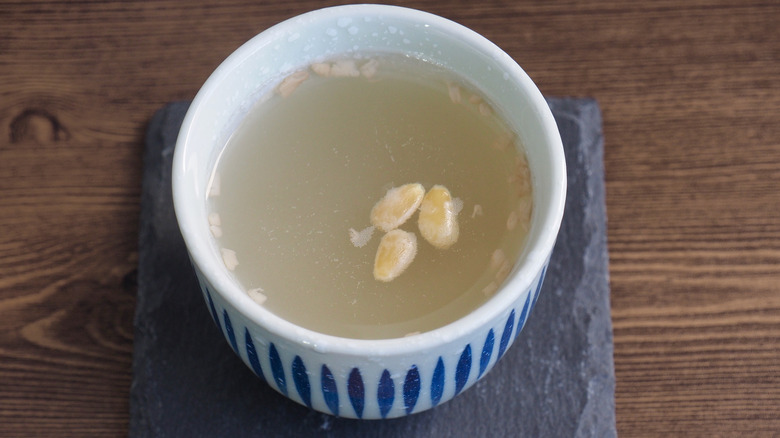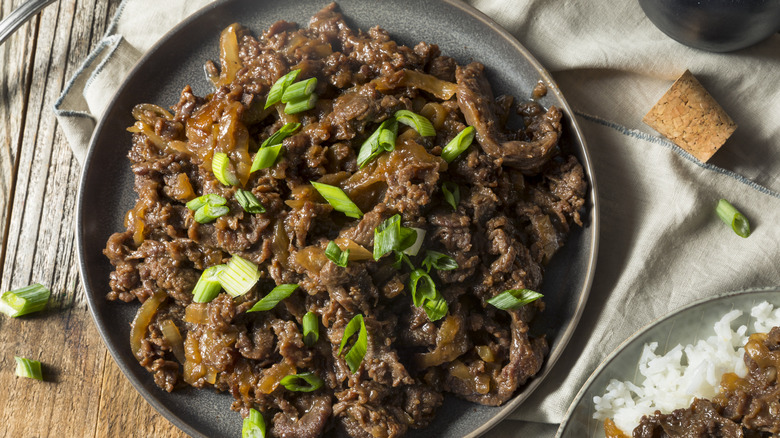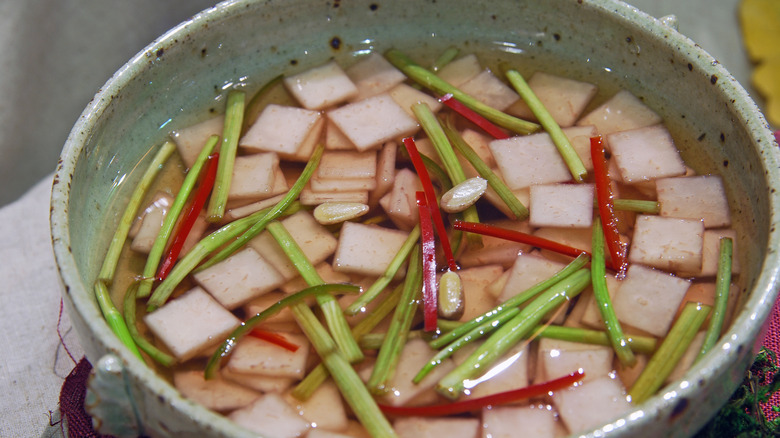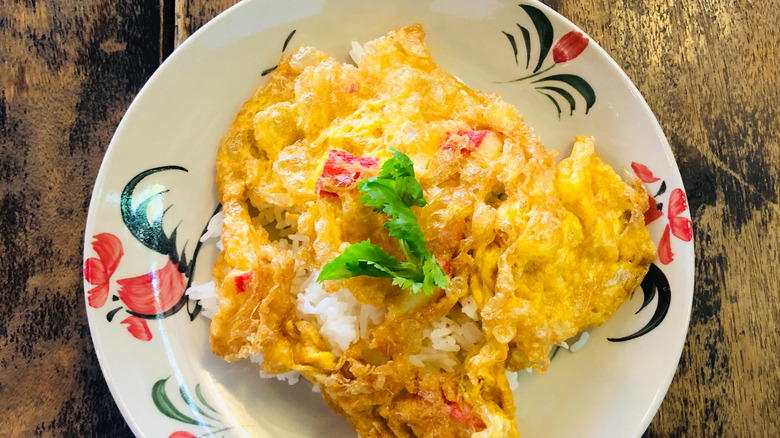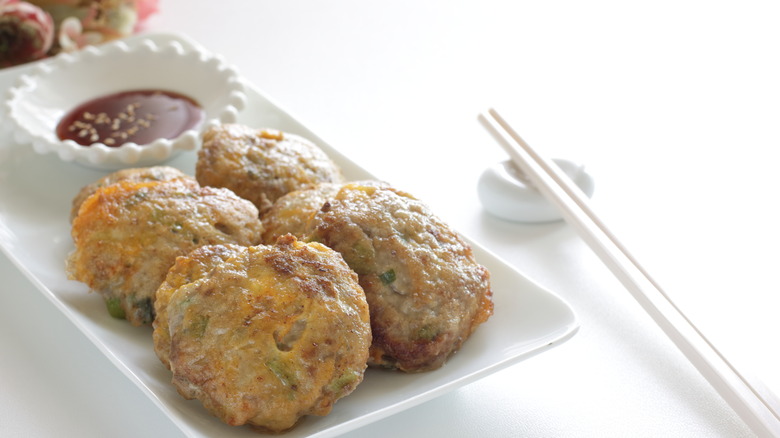14 Dishes That Define Korean Lunar New Year
While many might associate the Lunar New Year with being a Chinese tradition, this sacred holiday is actually widely celebrated across the entire continent of Asia. In Korea, the holiday is known as Seollal, and it is one of the more important celebrations as it pays homage to Korean traditions and ancestors.
The celebration lasts for three days, and as you might imagine, food is one of the most integral aspects of the holiday. Three days of delicious, traditional Korean dishes that include hearty soups and stews, dumplings, meats, and, of course, desserts. As with many cultures, Korean food is an expression of love, and has many other meanings.
Many of these dishes are not only delicious, but they each hold special significance in Korean households. If you've never tried Korean cooking, or want to familiarize yourself with some of the cuisine's most popular dishes, this is the perfect place to start.
Tteokguk
If there is one dish on this list that is an absolute must to ring in the Korean Lunar New Year, it's tteokguk. Also known as Korean rice cake soup, this dish is representative of the new beginnings that come with a new year. Eating a bowl of this soup is supposed to foster a sense of renewal as one enters the new year, offering a chance at prosperity and growth. Tteokguk is traditionally served as a breakfast dish, starting the first day of the new year off on a positive note.
Tteokguk is recognizable because of the sliced, round rice cakes that make up the primary part of this dish. The beautiful thing about this soup is that the cakes can be added as much or as little as suits each person. Traditionally, other ingredients include beef brisket, egg, seaweed, and green onions. The shredded beef brisket complements a homemade beef broth for extra flavor. Albeit simple, this dish holds a lot of flavor and meaning all at once.
Mandu
Many cultures have a version of dumplings, and Korea's version is mandu — another staple that you'll find on the tables of families during a New Year celebration. These handheld creations are typically made by hand, which is the perfect family activity for New Year's Day. Mandu is said to be a symbol of good luck, but also goodwill for your loved ones.
Typical Korean mandu are filled with a mixture of vegetables and ground meat (commonly pork, or other ground meats). The vegetable portion is comprised of very finely chopped onions, cabbage, and mung bean sprouts. All of the goods are wrapped in a thin dumpling dough and can be pan-fried or steamed. It truly is a choose-your-own-adventure dish, with many families having different traditions and methods for making mandu.
While mandu can stand alone as an appetizer or side dish for any meal during the holiday, they can also be tossed into the tteokguk soup, transforming it into tteok mandu guk — another very popular New Year dish, and a great way to combine two delicious specialties.
Japchae
Japchae is a Korean favorite that is served for numerous festive occasions, but is prominently known for being enjoyed during the Lunar New Year holiday. If there is one dish that pays homage to Korean heritage, it's this one. Japchae has been a Korean specialty for centuries — since the 17th century, to be specific.
This stir-fry noodle dish is appealing in its colorful appearance, which is made possible by the numerous vegetables that are mixed in with the noodles. Despite being widely known as a noodle dish, japchae's original recipe only included vegetables and mushrooms.
Nowadays, many know this dish more prominently by the name "Korean glass noodles." The noodles are relatively clear in their appearance and are made from sweet potatoes, and they're the highlight of this dish. While it is typically served as a side, japchae can also be served as a main dish with meat and rice.
Hobak jeon
Putting the main dishes aside for a minute, Korean meals are distinct largely because of the army of side dishes that accompany them. One popular side dish is hobak jeon, or fried zucchini. Jeon is a category of pan-fried Korean cuisine utilizing different ingredients, so keep that in mind as this name appears in multiple dishes.
Hobak jeon is popularly known as a celebratory dish and is most commonly served on both New Year's Day and Korean Thanksgiving (a harvest-season event called Chuseok). As with many Korean dishes, the simplicity of this side is what makes it so great. Zucchini is cut into slices, breaded, and fried in oil. It's the perfect side for a richer dish, to help balance out the stronger flavors.
Hobak jeon can be enjoyed with a dipping sauce to elevate the vegetable flavor, but it's also delicious on its own. If you're in need of an easy dish at any time, this should be your go-to.
Sanjeok
Sanjeok is Korea's take on meat skewers, with a bit of a twist. If you haven't caught on to the pattern, many of the celebratory foods enjoyed during a Korean holiday like Lunar New Year are colorful in nature. The colors make the food all the more beautiful when serving them, making for a table full of prosperity and vibrancy.
Sanjeok is traditionally served on a skewer, and often includes thinly sliced beef, carrots, and green onions, and can also include pickled radish or imitation crab meat for its vibrant red color. The entire skewer is covered in a thin layer of flour and egg, and is then fried. All of the different ingredients put together make for a harmonious blend of flavors.
This dish is commonly served on both Lunar New Year and Korean Thanksgiving, as another great dish that involves all family members. The joint effort of putting each dish together is what makes Korean holidays so special.
Galbijjim
Galbijjim is a well-known and loved Korean beef short rib stew that is commonly enjoyed in households and restaurants alike. Chef David Chang would rather eat galbijjim instead of turkey on Thanksgiving. However, most people do not know the royal roots that this dish can be traced back to. We're throwing it back to the 1700s, when beef was an absolute luxury in Korea. As such, beef dishes were considered a symbol of wealth and royalty.
Flashing forward to modern-day Lunar New Year celebrations, galbijjim is a popular dish that carries the weight of Korean history and is a quintessential piece of this meaningful holiday. These beef short ribs are the highest quality of meat that you can serve, cooked slowly in a mixture of tasty ingredients.
While this dish is certainly more on the laborious side, it is well worth the effort. The sauce is a blend of Asian pear (or sweet apples to substitute), sea kelp stock, brown sugar, and other seasonings, and this is the most distinguishable part of the dish. The meat gets coated in this marinade and simmered for a solid amount of time over a low temperature. It may take a while, but it certainly is nothing complicated.
Nokdujeon
A pancake made from ground-up mung beans, nokdujeon is another commonly served Korean side dish. Mung beans have a very distinct flavor profile in Korean cuisine, and their sprouts are a popular side dish on their own. Nokdujeon is another staple for Korean Lunar New Year meals.
These pancakes are super easy to make, and are great for preparing ahead of festivities. The batter can vary in its contents but also includes things like minced pork and kimchi. The most difficult part of preparing this dish is soaking the beans, which is recommended for several hours. Once your beans have soaked, blending them with water will turn them into the consistency that will create the base of the batter.
Nokdujeon is considered as a food for ancestral rites, which means that it is placed on the table as a gesture to Korean ancestors. While the meaning bears much significance, the taste of these delicious pancakes is certainly notable as well.
Gujeolpan
While there are many popular dishes associated with the Korean Lunar New Year, gujeolpan should be regarded as the centerpiece of the occasion. Gujeolpan can literally be translated into "a plate with nine sections," which more or less explains this dish. Served on a large platter are eight different side dishes, which surround a pile of thin, crepe-like pancakes.
Usually one of the more elaborate dishes, gujeolpan dates all the way back to the 14th century and follows an ancient thought that each element of the dish represents a distinct element that rules over our universe. Typically there are five elements, which are expressed in five different colors with varying side dishes of red, yellow, white, black, and blue or green. While the dish can vary in its components, all five colors should be represented.
Some typical sides that are included with this dish are mung bean sprouts, onions, assorted mushrooms, bell peppers, radishes, cucumbers, and many others. While it may seem simple in appearance, the complexity of this dish should not be underestimated, as each item may have a different preparation method.
Yaksik
Yaksik is one of the few sweet dishes that you'll find on a Korean New Year's table, made up of sweet rice with dried fruits and nuts. This dessert has quite the legend behind it about a king and a crow, dating back to around 1,500 years ago. Yaksik in Korean can be translated to "medicinal food," which speaks to the reason that this food is typically served and enjoyed on this special holiday. The medicinal benefit of this sweet treat is thought to come from the addition of honey, which provides health upon entering the New Year.
The type of rice used is particularly sticky, gluey in texture, and gluten-free. Any mix of dried fruits and nuts can be added to the mix of this dish, which is held together by the rice along with sesame oil, honey, and soy sauce. While it may sound like an odd combination, the sweet and savory flavors work together to create a pleasant dessert.
Sikhye
While Korean food is unique all on its own, there is nothing quite like the Korean sweet rice drink known as sikhye. This traditional beverage is a popular dessert drink that is served on many festive holidays like Lunar New Year. This fermented drink takes on a distinct and unique scent, and is very subtle in flavor — but delicious nonetheless. The most unique part about this drink is its floating rice grains that are often kept in to give it a bit of texture.
The body of this drink is made from four simple ingredients: water, barley flour, sugar, and rice. The fermented rice is a key piece of this drink, as it gives the rice its texture while also adding to the malty flavor of sikhye. While you can find this popular beverage in the canned goods section of many Korean grocery stores, making it at home is the best way to guarantee you're getting the most intense flavor possible.
Bulgogi
It wouldn't be a Korean meal without some Korean BBQ elements included in the spread. Bulgogi is the epitome of Korean BBQ, and can be served as both a side and main dish to celebrate the Lunar New Year. While this dish is less specifically associated with any Korean holiday, it is still commonly served to mark the occasion due to it being a staple dish in the cuisine as a whole. The beauty of bulgogi is that it can be served as a standalone, or it can be used to elevate nearly any dish that is served for Lunar New Year, or it can simply sit atop a bed of rice to make for a delicious meal.
Any type of meat can be used for bulgogi, from chicken to pork. However, the classic beef bulgogi is the true essence of Korean food. The marinade is what makes this dish particularly distinct, paired with a finely sliced beef cut that is cooked until crispy. Every region of Korea can have different ways of flavoring this popular dish, speaking to the endless traditions that make up the Korean cooking experience.
Nabak kimchi
If you know anything about Korean cuisine, you know that kimchi is an essential side dish that is served next to nearly every meal. This popular fermented vegetable can truly pair with anything and everything, and is delicious to snack on by itself as well. Nabak kimchi, also called water kimchi, is another variation of the popular side that is typically made specifically for festive occasions. For all of our plant-based eaters in the house, this dish is vegan-friendly.
The name of this kimchi type comes from the style of how the radish is cut into small squares. Nabak kimchi is the perfect thing to eat with classic tteukguk soup, adding a wave of freshness and a nice crunch to the otherwise warm, soft soup. While the preparation process is relatively easy and hands-off, the cabbage has to ferment in the liquid mixture for a minimum of two days.
Ge matsal jeon
A lesser-known but equally delicious dish that can be served on the Lunar New Year in Korea is ge matsal jeon. This is yet another variation of a Korean fried side dish, but this particular specialty can be thought of as a sort of imitation crab omelet. Although it has jeon in its name, there is no flour-based batter that goes into this unique-yet-simple snack.
While it might sound complex, whipping up this side is on the easier side. All you need is a bunch of imitation crab sticks, eggs, green onions, and an oiled frying pan. During the holiday season, this dish can be created in the shape of a heart to reflect the more celebratory occasion. These omelets are handheld and bite-sized, and will also stand out on the table with the bright red of the imitation crab adding to the color of the occasion.
Wanja jeon
Korean food, for all of its tastiness and creativity, should truly get an award for its variety in the fried-food category. This time the fried dish is called wanja jeon. Think of wanja jeon as a Korean meatball, which is served on traditional holidays like the Lunar New Year and Chuseok in Korea as part of the entire collection of fried sides.
While this dish is mainly thought of as a side, it can also be included in many of the traditional soups and other dishes served for the New Year. The filling includes ground pork or beef — or the two meats blended together — and tofu. Everything is packed together with a blend of vegetables, seasonings, and eggs. Once again, we're here to tell you that this side is as simple as it gets for a high-quality end result. Think of the process as nearly identical to preparing a regular meatball, but with the magic of years of tradition included.
